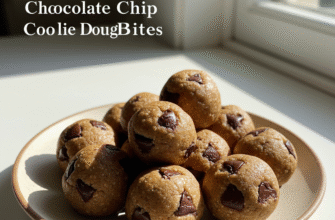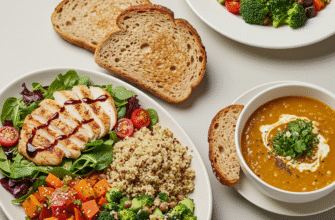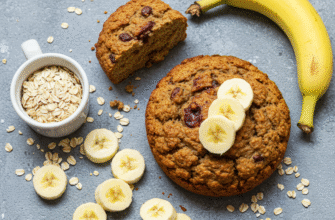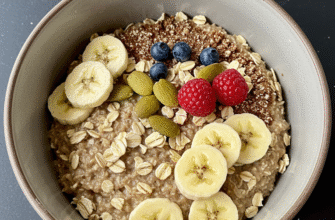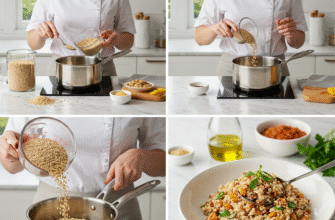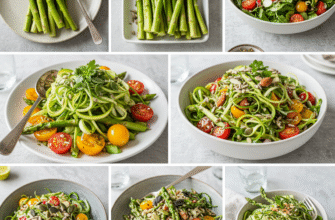Opening your refrigerator door shouldn’t feel like entering a chaotic abyss. We’ve all been there: digging past forgotten leftovers, questionable containers, and wilting greens to find that one ingredient we need. But what if your fridge could be less of a stress zone and more of a launchpad for healthier eating habits? Transforming your fridge from cluttered to curated isn’t just about aesthetics; it’s a practical step towards making better food choices easier and reducing food waste. An organized fridge puts healthy options front and center, ready to grab when hunger strikes.
Think of your refrigerator as valuable real estate. Like any well-organized space, different zones are suited for different purposes. Understanding how temperature varies within your fridge is key to keeping food fresher for longer and making the most of your groceries. It’s not just about shoving things in wherever they fit; a little strategy goes a long way.
Understanding Your Fridge’s Climate Zones
Most refrigerators aren’t uniformly cold. Temperature can fluctuate significantly from the door to the back, and from the top shelf to the bottom drawers. Knowing this helps you store food optimally.
The Door: The Warmest Zone
Refrigerator doors experience the most temperature fluctuation because they’re opened frequently. This makes them the least suitable place for highly perishable items like milk or raw eggs, despite often having designated spots for them. Instead, use the door shelves for items that are more stable and less sensitive to temperature changes. Think condiments, sauces, pickles, olives, bottled water, and juices. These items generally have preservatives or higher acidity that helps them withstand minor temperature shifts.
Upper Shelves: Consistent Coolness
The upper shelves tend to have the most consistent, albeit slightly warmer, temperatures compared to the lower back sections. This area is ideal for ready-to-eat foods that don’t require cooking before consumption. Store leftovers (in clear, airtight containers!), yogurt cups, deli meats, tortillas, hummus, and other prepared snacks here. Keeping these items at eye level makes them easy to see and grab, encouraging you to eat them before they spoil.
Middle Shelves: Steady Cold
Moving down, the middle shelves generally offer a colder, stable environment. This is a good spot for eggs (keep them in their original carton for protection and date visibility) and dairy products like milk, cheese, butter, and sour cream. While many fridges have egg compartments in the door, the main compartment provides a more consistent temperature, which is better for their longevity.
Bottom Shelf: The Coldest Spot
The back of the bottom shelf is typically the coldest part of your refrigerator, excluding the freezer. This makes it the safest place to store raw meat, poultry, and fish. Why here? Firstly, the cold temperature helps keep these highly perishable items safe. Secondly, storing them on the bottom shelf prevents any potential drips from contaminating other foods below. Always keep raw meats well-wrapped or in sealed containers or on a plate to catch any leaks.
Verified Storage Tip: Maintaining a consistent refrigerator temperature, ideally between 35-38°F (around 2-3°C), is fundamental for food safety and longevity. Proper air circulation is vital for this consistency, so avoid overfilling your fridge. Use a standalone refrigerator thermometer to periodically confirm your appliance is maintaining the correct temperature range throughout.
The Crisper Drawers: Humidity Control Centers
Those drawers at the bottom aren’t just extra storage; they’re designed to control humidity, which is crucial for produce. Most newer fridges have adjustable humidity settings for each drawer.
- High Humidity Drawer: Keep this setting for vegetables prone to wilting, like leafy greens (kale, spinach, lettuce), broccoli, carrots, cucumbers, and bell peppers. The higher humidity helps them retain moisture and stay crisp. Don’t wash greens until you’re ready to use them, as excess moisture can promote spoilage.
- Low Humidity Drawer: Use this setting for fruits and vegetables that release ethylene gas and are sensitive to moisture, which can cause them to ripen or rot faster. Think apples, pears, grapes, mushrooms, and avocados (once ripe). The lower humidity allows the ethylene gas to escape.
A crucial point: Keep ethylene-producing fruits (like apples, bananas (if stored in fridge), pears, stone fruits) separate from ethylene-sensitive produce (like broccoli, carrots, leafy greens) as the gas can cause the latter to spoil prematurely. Storing them in different drawers helps manage this.
Strategic Organization for Healthy Habits
Now that you know where things ideally go, let’s talk strategy for making your healthy fridge work for you.
Visibility is Key
Out of sight, out of mind definitely applies to refrigerators. If healthy snacks are hidden behind jars or buried in drawers, you’re less likely to reach for them.
- Use Clear Containers: Store leftovers, pre-cut veggies, fruits, and other prepared items in clear, stackable containers. This allows you to see exactly what you have at a glance, reducing the chance of food getting lost and forgotten. Glass containers are great as they don’t stain or retain odors.
- Group Like Items: Designate specific areas or use bins for similar items. Have a bin for yogurts, another for cheeses, one for grab-and-go snacks. This creates order and makes finding things much faster.
- Healthy Options Front and Center: Intentionally place healthier choices like pre-portioned fruit salads, veggie sticks with hummus, hard-boiled eggs, or yogurt cups at eye level and near the front. Make them the easiest things to grab when you open the door. Keep less healthy treats or indulgent leftovers slightly out of direct view.
Implement FIFO: First-In, First-Out
This simple principle, borrowed from inventory management, is fantastic for reducing food waste. When you buy new groceries, move the older items to the front of the shelf or top of the stack, and place the new items behind or below them. This encourages you to use up the older food before it expires.
Labeling helps: While clear containers are great, adding a simple label with the contents and the date it was stored (especially for leftovers or opened packages) can be incredibly helpful. Use masking tape and a marker, or invest in reusable labels.
Prep for Success
An organized fridge is even more powerful when stocked with pre-prepped healthy ingredients. Spend a little time after grocery shopping to wash and chop vegetables, cook a batch of grains like quinoa or brown rice, or portion out nuts and seeds.
- Wash and chop veggies like carrots, celery, bell peppers, and broccoli. Store them in airtight containers with a damp paper towel to maintain freshness. They’re ready for snacking, salads, or stir-fries.
- Wash berries and store them in a single layer in a breathable container lined with a paper towel.
- Hard-boil some eggs for quick protein boosts.
- Portion snacks like nuts, seeds, or trail mix into small containers or bags.
Maintaining Your Organized Oasis
Organization isn’t a one-time task; it requires a little upkeep.
Regular Clean-Outs
Aim for a quick fridge check weekly, perhaps before you go grocery shopping. Toss out anything past its prime, wipe up small spills, and check dates. This prevents minor messes from becoming major cleaning projects and ensures you know what you actually need to buy.
Deep Cleaning
Every month or two, give your fridge a more thorough clean. Remove shelves and drawers, wash them with warm, soapy water, and wipe down the interior surfaces. This eliminates lingering odors and potential bacteria buildup. Baking soda dissolved in water makes a great natural cleaner and deodorizer.
Organizing your refrigerator is more than just tidying up; it’s an active step towards supporting a healthier lifestyle. By understanding temperature zones, using smart storage solutions, prioritizing visibility, and implementing simple routines like FIFO and regular cleaning, you transform your fridge from a potential source of food waste and unhealthy impulse grabs into a well-oiled machine that makes healthy eating convenient and appealing. It takes a little effort initially, but the payoff in less wasted food, easier meal prep, and effortless healthy choices is well worth it.

